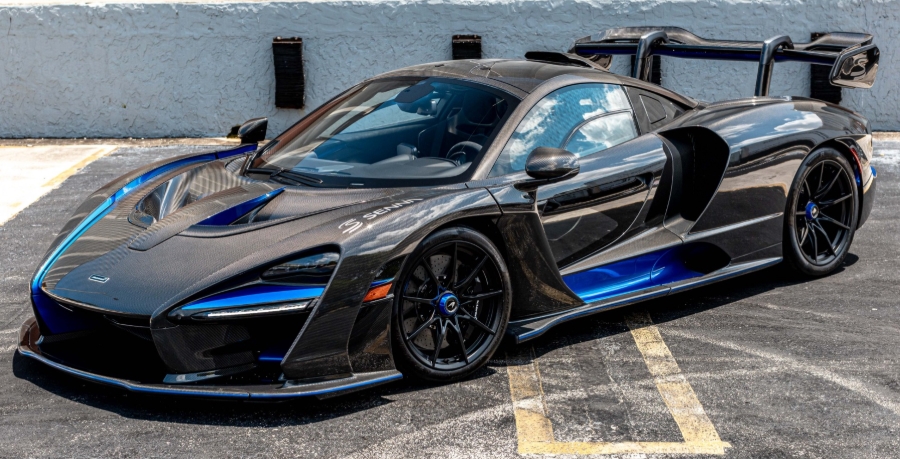The Evolution of the McLaren Senna
The McLaren Senna stands as one of the most iconic and groundbreaking hypercars in automotive history. Named after the legendary Formula 1 driver Ayrton Senna, the car embodies the racing spirit, technological innovation, and extreme performance that McLaren Automotive is renowned for. Since its debut, the Senna has evolved from a visionary concept to a limited-production masterpiece, cementing its place among the most revered supercars ever built.
Origins and Concept: The Birth of the Senna
The idea for the McLaren Senna was born from a desire to create a track-focused hypercar that would push the boundaries of performance and aerodynamics. Announced in 2017, the Senna was officially unveiled at the 2018 Geneva Motor Show. It was designed as a spiritual successor to McLaren’s legendary F1, aiming to deliver unparalleled driving experiences both on the road and on the track.
The concept was rooted in McLaren’s “Ultimate Series,” a line that includes the P1 and the Speedtail, representing the pinnacle of their technological and performance achievements. The Senna was envisioned as a car that would prioritize downforce, lightweight construction, and driver engagement.
Production Years and Limited Status
The McLaren Senna was produced over a relatively short period, from 2018 to 2019, with a strict limited run to preserve its exclusivity. The company announced a production run of 500 units, each meticulously handcrafted at McLaren’s Woking facility in the United Kingdom.
The production commenced in 2018, with deliveries starting shortly thereafter. Due to the car’s exclusivity and high demand, all units were accounted for quickly, and the Senna remains one of the most collectible and sought-after hypercars to this day.
Design and Engineering Highlights
Before diving into the specific models and trims, it’s essential to understand the core features that define the Senna:
- Powertrain: The Senna is powered by a 4.0-liter twin-turbo V8 engine (designated as the M840TR), producing 789 horsepower and 590 lb-ft of torque. This engine is paired with a 7-speed dual-clutch transmission.
- Performance: It can accelerate from 0 to 60 mph in 2.7 seconds and reach a top speed of 208 mph.
- Aerodynamics: The car boasts active aerodynamics, including a large rear wing, front splitter, various vents, and a sophisticated aero package that generates over 1,000 kg (2,205 lbs) of downforce at high speeds.
- Lightweight Construction: Extensive use of carbon fiber, including a monocoque chassis, keeps the weight down to approximately 3,119 lbs (1,415 kg).
- Track-Focused Features: The Senna features adjustable suspension, racing-derived aerodynamics, and a driver-centric interior with minimal sound insulation for pure engagement.
Models and Trim Levels
Unlike mass-produced supercars, the McLaren Senna was offered with a highly bespoke approach, with all units sharing core specifications but allowing for minor bespoke options through McLaren Special Operations (MSO). The following sections detail the available models, special editions, and notable features:
1. Standard McLaren Senna (2018-2019)
The baseline Senna was already a track-focused masterpiece with minimal options. Its features included:
- Exterior: Multiple color options, including signature shades like MSO Orange, McLaren Orange, and multiple bespoke hues.
- Interior: Minimalist, racing-inspired cabin with lightweight seats, Alcantara upholstery, and a racing steering wheel.
- Wheels: Center-lock racing wheels with Pirelli P Zero Corsa tires.
- Customization: Buyers could choose bespoke paint, interior trims, and MSO options such as unique interior stitching, bespoke liveries, or personalized detailing.
The standard model was already a limited and highly exclusive vehicle, with no additional trim levels beyond the base configuration.
2. McLaren Senna GTR (2019)
While not a traditional trim level, the Senna GTR represents a track-only variant derived from the original Senna.
- Production: Limited to 75 units, exclusively for track use.
- Engine & Performance: The GTR features a more powerful version of the 4.0-liter twin-turbo V8, producing 814 horsepower.
- Design: Heavily modified aerodynamics with a larger rear wing, wider bodywork, and extensive use of carbon fiber.
- Features: No rear seats, stripped-down interior, racing harnesses, and specialized tires.
- Purpose: Built solely for track use, the GTR provides even higher downforce and aerodynamic efficiency, emphasizing maximum performance on racing circuits.
The GTR was not available as a road car and served as a homologation special for racing.
Notable Special Editions and Customizations
While the standard Senna was already highly exclusive, McLaren offered several bespoke options through MSO, allowing clients to tailor their vehicles further. These included:
- MSO Bespoke Paints: Custom liveries, unique color combinations, and personalized graphics.
- Interior Customizations: Unique stitching, personalized embroidery, and bespoke materials.
- Aerodynamic Packages: Some clients opted for additional aero components to enhance downforce or reduce weight.
- Wheel Options: Different finishes, including gloss, matte, or custom colors.
.
Many car aficionados have multiple hobbies, like boating as well as auto stuff. Those who don’t already own a boat (and even some that do), may have thought about building their own boats. It’s really not as hard as you’d think. Just take a look at these easy boat building plans!

.
The Legacy and Impact of the McLaren Senna
The Senna’s brief production run and limited number have cemented its status as one of the most exclusive supercars ever manufactured. Its engineering innovations, especially in aerodynamics and lightweight construction, have influenced subsequent McLaren models and set new standards in the hypercar segment.
The car’s design philosophy—prioritizing driver engagement, raw performance, and racing heritage—has resonated with enthusiasts and collectors alike. The Senna’s influence extends beyond its immediate performance; it symbolizes McLaren’s commitment to pushing technological boundaries.
The Future of McLaren’s Hypercars
Although the Senna is no longer in production, its influence persists in McLaren’s ongoing development of new models. The company continues to innovate with hybrid technology, electrification, and advanced aerodynamics, building on the lessons learned from the Senna and its derivatives.
Conclusion
The McLaren Senna’s evolution from concept to limited-production legend reflects a deliberate focus on extreme performance and bespoke craftsmanship. Produced between 2018 and 2019, with a special track-only GTR variant in 2019, the Senna stands as a testament to McLaren’s engineering prowess and racing pedigree. Its limited number, bespoke customization options, and technological innovations ensure that the Senna remains an aspirational icon in the world of hypercars.







